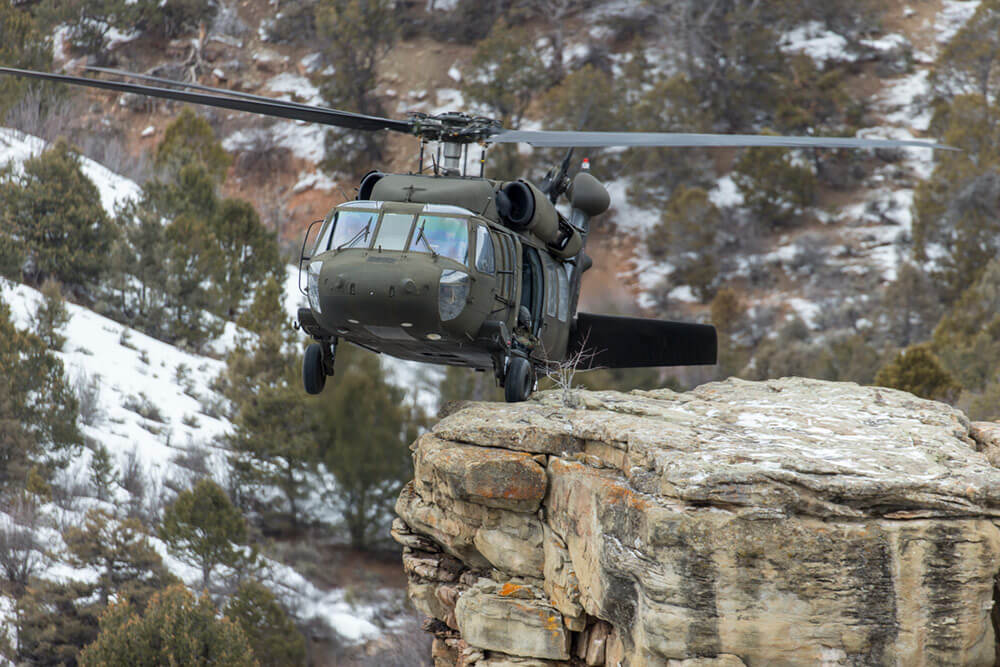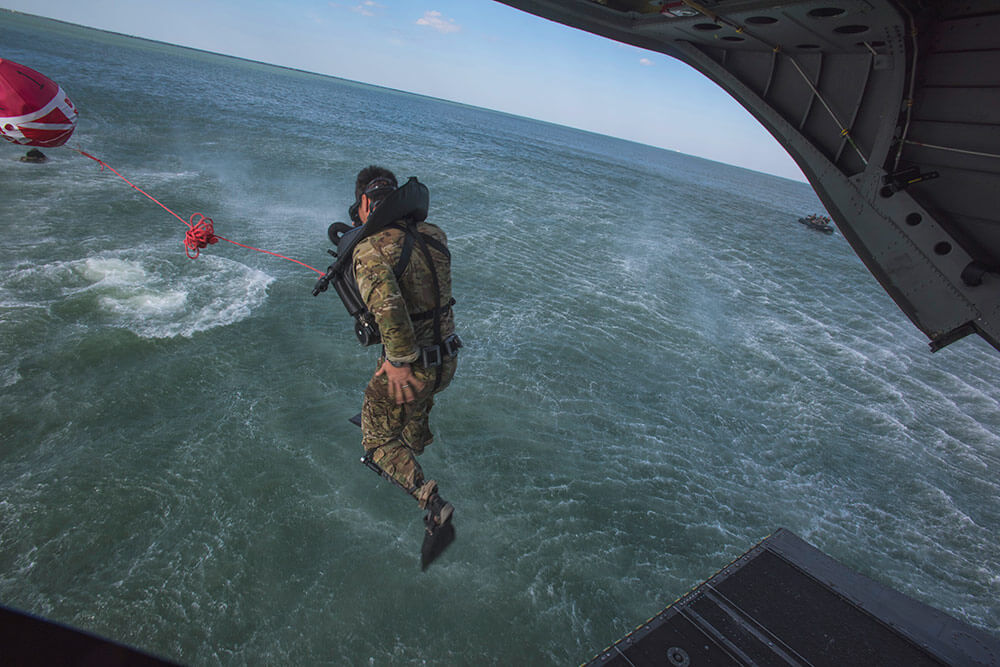Takes Pilots to New Heights
The High-Altitude Army National Guard Aviation Training Site (HAATS) is providing unparalleled aviation training to pilots around the world. Located in Gypsum, Colorado, and operated by the Colorado Army National Guard, HAATS is the only Department of Defense schoolhouse geared specifically towards teaching high-altitude, power-management, environmental training to military rotary-wing pilots.
There are four Army National Guard aviation training schools in the country, but HAATS is considered the only site able to provide a graduate-level training course. According to HAATS commander LTC Anthony Somogyi, HAATS strives “to be the best aviation training site in the Army.”

HAATS, which celebrated its 30th anniversary last year, trains more than 380 pilots a year. The site is renowned not only in U.S. military aviation, but also in the military aviation of allied forces. HAATs has hosted and trained helicopter pilots from all over the world, including pilots from Denmark, Germany, the Netherlands, Norway, the Republic of Georgia and Slovenia.
The training site began in 1985 and was then known as the Colorado High-Altitude Site (CHATS). The flight course was initially created solely as a Colorado Army National Guard training facility. The program gained popularity after National Guard units in North Dakota and West Virginia requested to train at the site in preparation for upcoming deployments to Honduras and other nations with terrain similar to the mountainous high-altitude regions of Colorado.

HAATS utilizes a training area of over one million acres. The Colorado landscape included in that training area offers a variety of natural landing areas such as bowls, pinnacles, ridgelines and confined areas. The region’s predictable wind patterns make it an ideal learning environment for experienced pilots with varying levels of expertise.
“We don’t teach people to fly; we teach them to fly at altitude,” said LTC Somogyi. “The more experience you have, the more you’ll get out of the course and the more concepts you’ll understand.”
Pilots training at HAATS experience flight altitudes ranging from 6,500 feet to 14,000 feet. The typical cruising altitude for a helicopter is between 2,000 and 5,000 feet.
“We can get students to 12,200 feet in a very short flight,” LTC Somogyi explained. “We can get them to pretty much any type of landing zone that they’re going to face anywhere in the world within a matter of minutes.”

In 1991, CHATS became a federal training site, and in 1995 was renamed HAATS. Funded by the National Guard Bureau, HAATS falls under the command of Adjutant General of Colorado, Maj Gen Michael A. Loh. In 2010, HAATS became an official joint school with the addition of a full-time Coast Guard instructor pilot.
“Our instructors are some of the best mountain pilots in the world, but that is not what makes them great teachers,” LTC Somogyi said. “They have the ability to read a student in a short amount of time and determine what training needs to take place. The training area is intimidating, so our instructors tailor the training to challenge the students without exceeding their limitations.”
In addition to training Army National Guard pilots, it is not uncommon for HAATS instructors to be called to duty for search and rescue missions in Colorado’s mountainous national parks. Rescue efforts are coordinated through the Air Force Rescue Coordination Center (AFRCC), and HAATS is the second busiest AFRCC location in the United States.
“[We] can’t peg a metric to how many lives we have saved,” said CW4 Darren Freyer, Colorado Army National Guard pilot and HAATS instructor. “[We] generally get a call once or twice a week, especially during the summer – the weekends are very busy for us. There’s always someone running around up in the mountains that needs to get help.”
The HAATS training course is designed to train pilots from all branches of the military. The facility can accommodate training classes of about 25 pilots per week. The site employs OH-58 Kiowas, CH-47 Chinooks, UH-60 Black Hawks and LUH-72 Lakotas. Soldiers, Airmen and Coast Guardsmen also have the option of bringing their own aircraft.
HAATS uses a unique training methodology that is based on aircraft power and designed to dramatically increase individual and crew situational awareness. Pilots spend one day of the week-long course in a classroom learning the foundational concepts of power management in high altitude, mountainous environments. The power management methodology requires pilots to account for their chopper’s power in all flight regimes, thus giving pilots greater insights into how to respond to situations that arise while flying.
While other mountain training methodologies focus on the environment, HAATS training focuses on what the aircraft can do, then factors in the changing environment into each scenario. Shifting the focus off of the environment and onto the aircraft teaches pilots to execute maneuvers using the appropriate amount of power.
“We teach students how to manipulate the power they have available to maximize the utility of the aircraft,” LTC Somogyi said. “We also teach them a little bit about themselves – their ability to manipulate the controls has just as much to do with power management as knowing how much power’s available. This power-based model is more applicable to military rotorcraft aviators and centers around aircraft torque which makes for a more objective-based training.”
After the in-class session, pilots spend the remainder of the course flying in and out of Colorado’s Rocky Mountains.
“The training area in this course is really phenomenal,” said CW2 Mary Jo Kraft, a student from the Montana Army National Guard. “There are so many different varieties of areas you can go and practice your power management techniques.”
Upon completion of the course, pilots leave with an in-depth understanding of power management and the skills needed to operate their aircraft on an advanced level. According to LTC Somogyi, the site’s results have proven that no other place in the United States can replicate the superior-level training offered at HAATS in as short a period of time.
LTC Somogyi continued, “The tenets that make HAATS the benchmark for training are the training area, the methodology and the instructors. Our training techniques have been proven over time and are the reason why they are imitated worldwide.”
By Staff Writer Drew Lansbury

